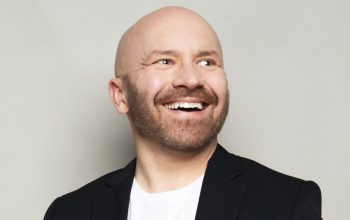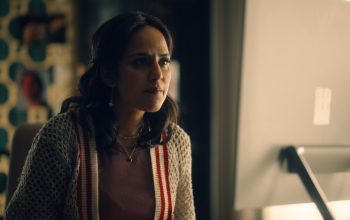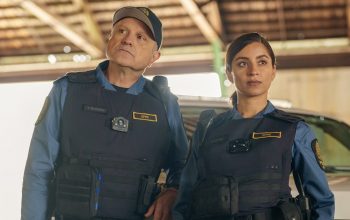Wayward Pines makes its debut on FOX tonight (CityTV in Canada), and we had the chance to chat with Executive Producer M. Night Shyamalan at C2E2 in Chicago last month. It was an intriguing conversation, and here’s what we learned about the filmmaker’s experience in the TV world. (Also, he gets major kudos for a Family Ties analogy!)
How did you decide how much to reveal about the story in each episode of Wayward Pines?
It was a really interesting process, when to tell people what’s going on in its 10 episodes. Immediately we made the decision not to wait until [Episode] 10, and to do it in the middle area. Then organically it kind of shifted. As long as we weren’t vamping. It never felt like we were “Let’s bring another character in and make up something and let’s vamp until we can get back, we need to fill air time.” I didn’t want that feeling.
There’s a Chicago connection here, in working with writer / producer Chad Hodge.
Chad wrote the first two episodes, I believe. He was the one that kicked it off. He did such a great job with the pilot. It was his pilot that got everything going. It was so cleanly written with that kind of bizarreness and he caught that oddity. He did such a great job for us to kick it off.
Wayward Pines is basically a 10-part film. Is TV a format you’d like to explore further, and what are some of the freedoms that come with not being constricted to a two or three hour film?
The answer to the first part of it is yes. It was a struggle because I didn’t really know how to do this. FOX and all of my partners were really gracious to allow me to learn on the job. Something good comes from that, learning on the job. You learn specific customized muscles. They let me figure out how to talk to the writers, how to get structure, what does it mean, what’s too fast, so I’m so happy to have learned those muscles. For me, honestly, they all translated back to filmmaking when I went to do my feature, The Visit, it all went right there — how I was directing, I was very influenced by the process of Wayward Pines.
One of the things that the format really allowed me to do, and again I did it in the film afterwards, is you’re listening to the piece,. By that, I mean you may make a show about Meredith Baxter-Birney’s family, and she’s the star, but it turns out that the son, Michael J. Fox, is actually where everything is moving towards, so the show starts tilting towards him. I’m using that as an example but you listen to the piece and where it wants to go, what the story wants to tell you and you can move the ship. Even if you thought the story was going here, you’re actively making the show at the same time and so you can adjust the ship. That’s a really amazing — I’ve never seen that in film — luxury. You can’t change the direction of the ship [in film], even if you know you’re going in the wrong direction. So listening as much as I could made my ear very aware that there’s a pliability to storytelling that I brought back to filmmaking.
The other part is a practical thing that I loved. Since we were doing a 10 episode series, when the director for [Episode] 7 came in, “Can you grab this for me, because I’ve edited 1, 3, 4 and 5, and I would love these three things when you’re going to get your episode.” Almost every episode I had every director picking up something for someone else’s episode, just little things that I needed. It created this strengthening because you’re listening to the piece, and you’re constantly making the piece. It wasn’t like one [episode] was done and that was it. I went back and I shot stuff and I picked up stuff for other people’s episodes, and added stuff for my episodes, and that was so freeing. Again, with the film The Visit, I shot the movie and I said, “We’re all coming back in three weeks.” I edited for three weeks, and came back and we shot for three days and did that same kind of thing, filled it in.
What are you able to tease about this story and the direction it is heading?
Everything is very grounded. There aren’t any red herrings that weren’t meant to be. I think what I like about the idea so much is — hopefully — that it feels like people who were two-dimensional suddenly become three-dimensional by the end of the series, they become more fleshed out. Even if they were acting two dimensionally, you understand why, and so even heinous acts that happen there feel almost justified if I’ve made a case for it by the end. Nothing was done frivolously. It’s all very much going towards a moral premise that the show is based on.
It’s a wonderful puzzle. I think you’ll see the lighter tones of the piece — you know this kind of David Lynch-ian dark stuff — it’s there and then it becomes really sinister at the end of Episode 2. And then it gets darker and darker as the show goes on. It’s interesting. One thing that I really love about the material, and I think is unique to our show, is it literally changes genres halfway through, and I found that incredibly exciting.
Is there a parable in this story?
There is, but then I’d have to tell you what the secret is.


